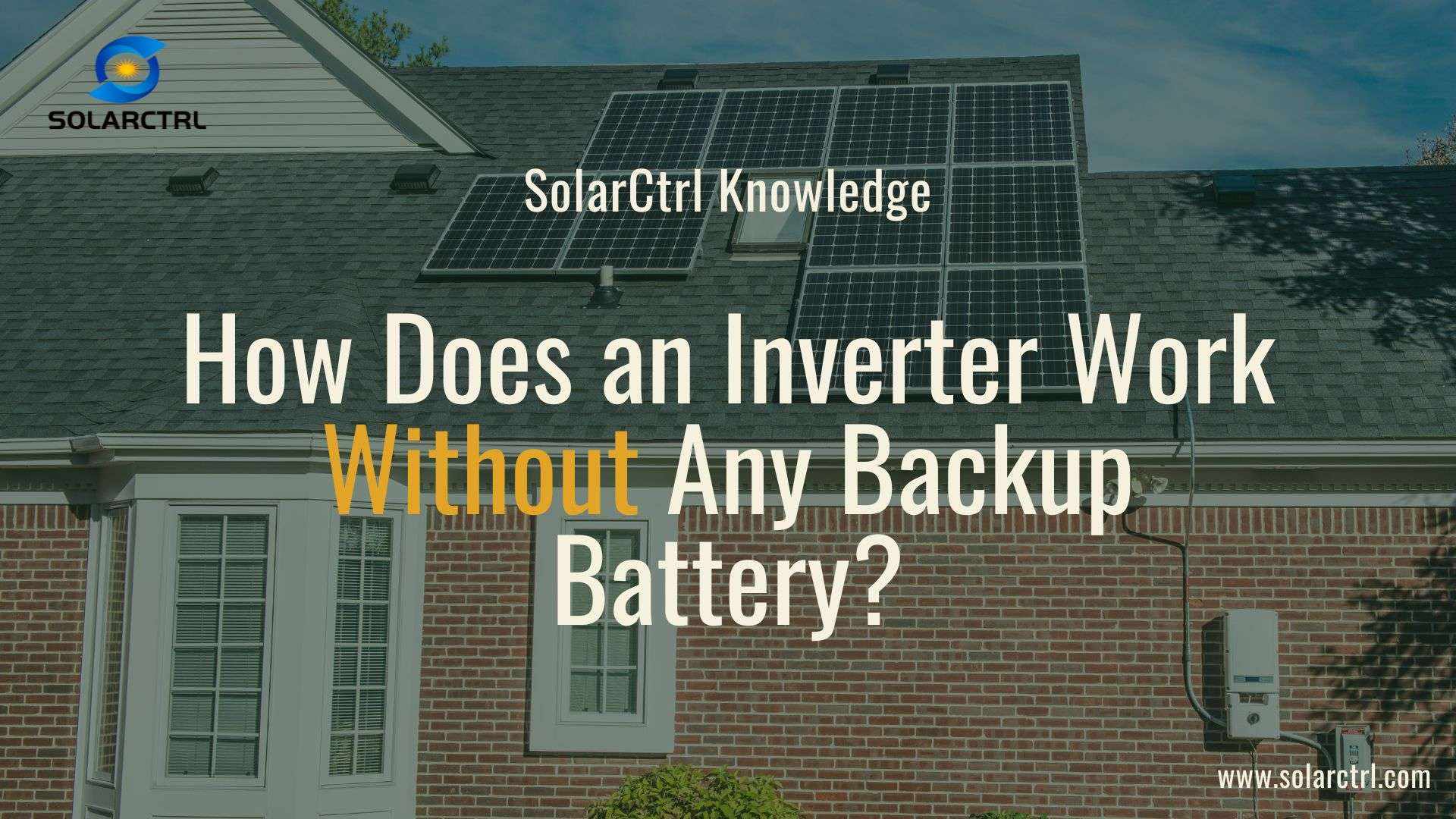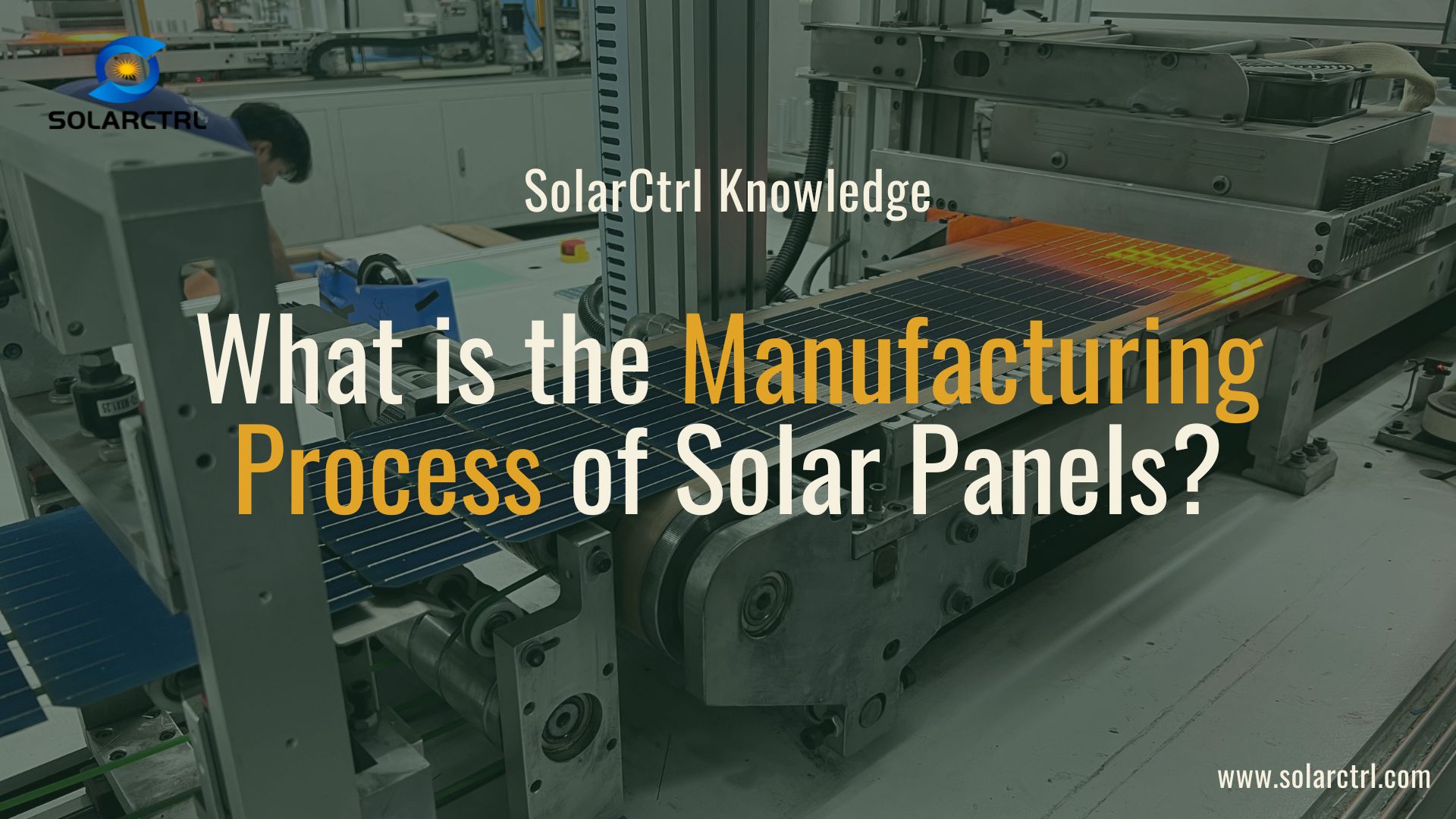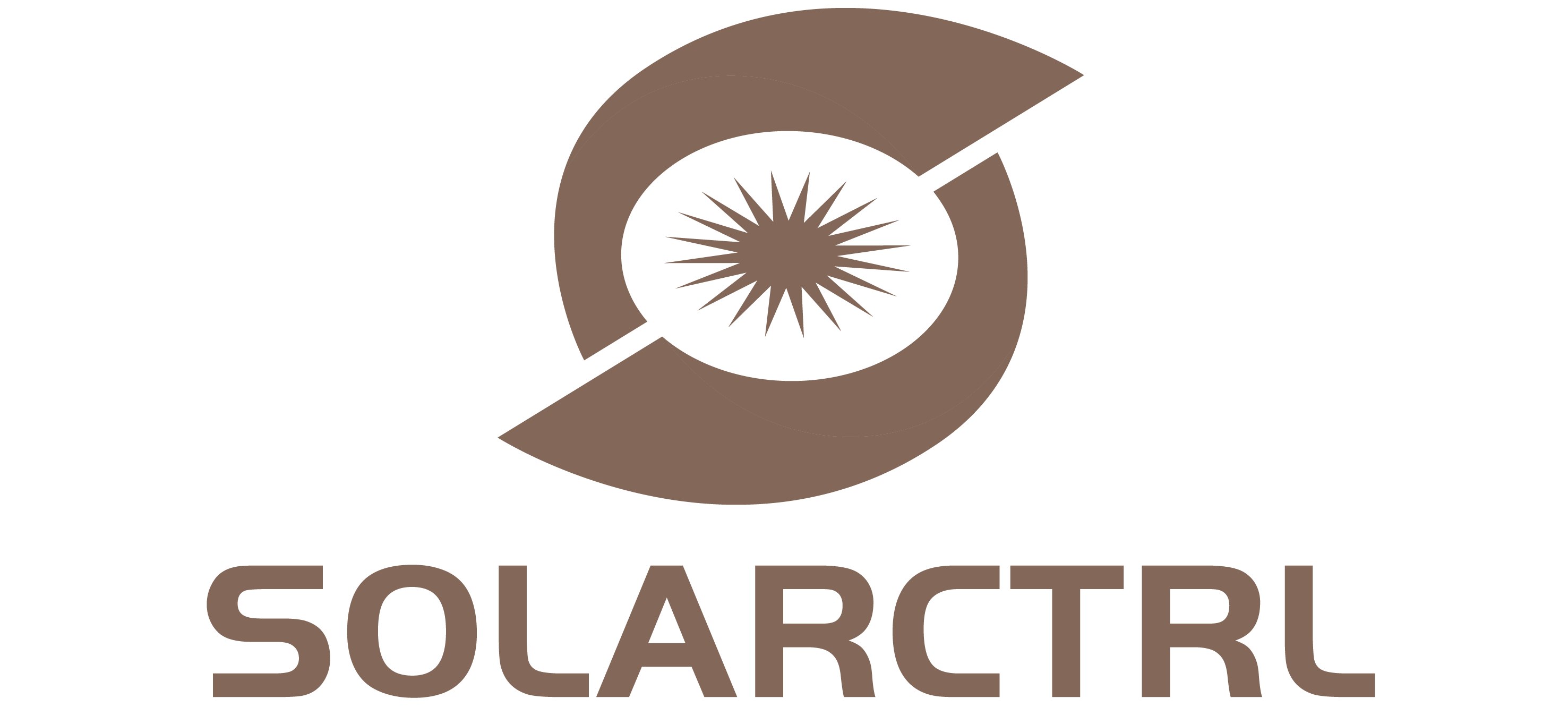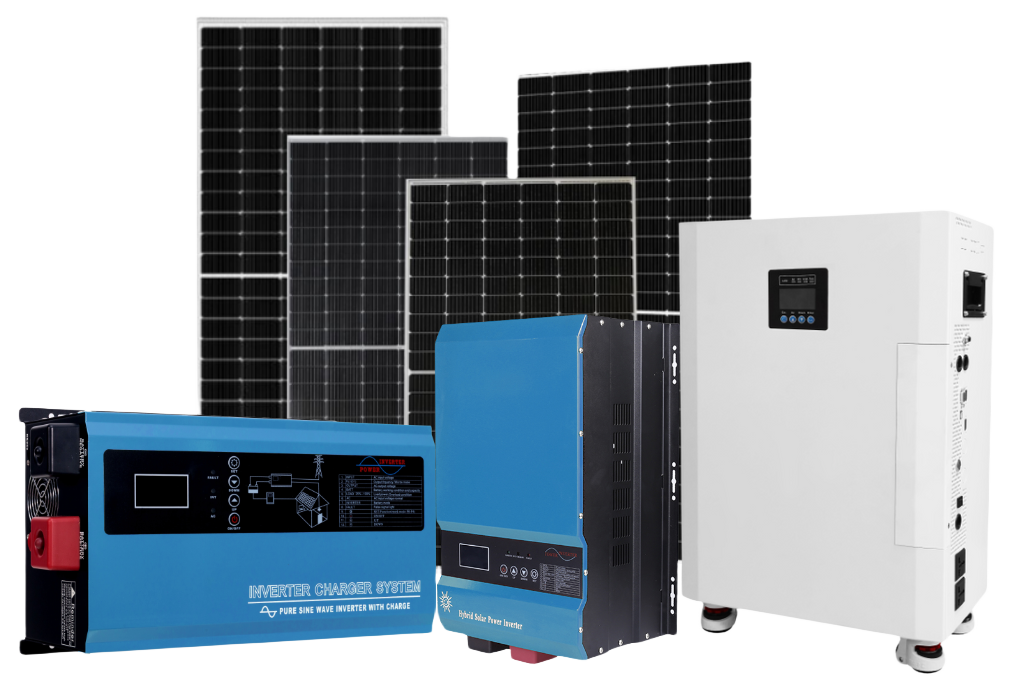Solar Panel Manufacturer
High Efficiency Monocrystalline Silicon Solar Modules With IEC61215, IEC61730, ISO9001, ISO45001.
Solar Panel Manufacturer
High Efficiency Monocrystalline Silicon Solar Modules With IEC61215, IEC61730, ISO9001, ISO45001.
The Best Choices for Solar Panel
Experience the future of renewable energy with SolarCtrl’s Solar Panels—engineered for adaptability in harsh environments and optimized for low-light performance. Harness the power of Multi Busbar Technology for higher output and enjoy superior resistance to hot spots.
- 182mm Solar Cells Type
- 168mm Solar Cells Type
- 157mm Solar Cells Type

The Best Choices for Solar Panel
Experience the future of renewable energy with SolarCtrl’s Solar Panels—engineered for adaptability in harsh environments and optimized for low-light performance. Harness the power of Multi Busbar Technology for higher output and enjoy superior resistance to hot spots.

- 182mm Solar Cells Type
- 168mm Solar Cells Type
- 157mm Solar Cells Type
Table Of Contents For This Page
To make sure you can find the information you want quickly,
we have prepared this content directory that will jump to the corresponding location when you click on it.
Table Of Contents For This Page
To make sure you can find the information you want quickly,
we have prepared this content directory that will jump to the corresponding location when you click on it.
General Hot Selling Products
Discover SolarCtrl’s High-Efficiency Solar Panels, setting the gold standard for performance and reliability in renewable energy.
Main Features
High-performance materials are suitable for coastal, farm, desert and other harsh environmental conditions.
The glass surface is anti-reflective and easy to clean, minimizing power generation losses caused by dirt and dust.
The special solar cell technology has excellent low-light power.
Better light trapping and current collection, Effectively improve the module’s power output and reliability.
10-year warranty for material and 25-year linear power output warranty.
| Model | Solar Cell(Type/Size) | Rate Maximum Power | Module Efficiency | Open Circuit Volatge | Short Circuit Current | Voltage at Pmax | Current at Pmax |
| 182mm Solar Cells Type | MONO (182mm) | 40~600 W | 15.27%~ 21.5% | 21.80~54.10 Voc | 2.39~14.10 Isc | 18.24~45.53 Vmp | 2.19~14.00 Imp |
| 168mm Solar Cells Type | MONO (168mm) | 350~450 W | 20.6%~ 20.80% | 35.02~41.04 Voc | 12.16~12.96 Isc | 30.24~36.96 Vmp | 11.58~12.17 Imp |
| 157mm Solar Cells Type | MONO (157mm) | 150~350 W | 20.50%~ 20.80% | 21.60~44.76 Voc | 8.83~9.94 Isc | 18.00~37.30 Vmp | 8.33~9.38 lmp |
Application

Residential Applications
- Rooftop Installations
- Solar Gardens

Commercial Applications
- Office Buildings
- Solar Carports
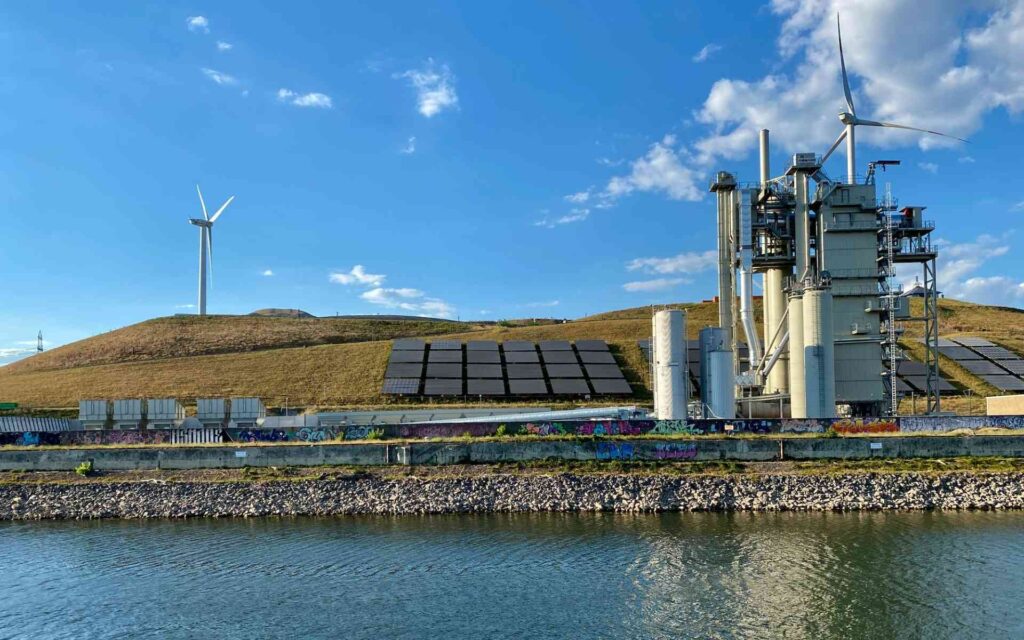
Industrial Applications
- Manufacturing Facilities
- Agriculture

Public Infrastructure
- Schools and Colleges
- Street Lighting
- Weather Stations

Specialized Applications
- Solar Water Heating
- Disaster Relief
- Marine and RVs
General Hot Selling Products
Discover SolarCtrl’s High-Efficiency Solar Panels, setting the gold standard for performance and reliability in renewable energy.


182mm Solar Cells Type


168mm Solar Cells Type


157mm Solar Cells Type
Main Features
High-performance materials are suitable for coastal, farm, desert and other harsh environmental conditions.
The glass surface is anti-reflective and easy to clean, minimizing power generation losses caused by dirt and dust.
The special solar cell technology has excellent low-light power.
Better light trapping and current collection, Effectively improve the module’s power output and reliability.
10-year warranty for material and 25-year linear power output warranty



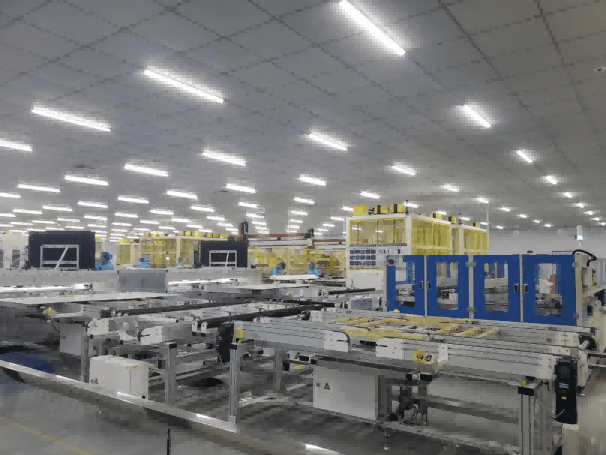





About SolarCtrl
SolarCtrl is a Solar Panel Manufacturer in China.
We offer 40-600w Solar Panels, Solar Lamps, Energy Storage Power Supplies and Off-grid Power Generation Systems, and so on.
No matter if you are looking for a wholesale supplier or if you need custom-made solar panel, we can all help.
Send an inquiry to get an instant quote now, Let’s raise your business to the next level !
About SolarCtrl
SolarCtrl is a Solar Panel Manufacturer in China.
We offer 40-600w Solar Panels, Solar Lamps, Energy Storage Power Supplies and Off-grid Power Generation Systems, and so on.
No matter if you are looking for a wholesale supplier or if you need custom-made solar panel, we can all help.
Send an inquiry to get an instant quote now, Let’s raise your business to the next level !
A Brief Self-Nomination, Why Choose SolarCtrl ?
Founded in 2009, SolarCtrl is a professional large-scale manufacturer and supplier in solar panel industry integrating R&D and production together.
Source Directly from SolarCtrl’s Factory Lines—where cutting-edge technology meets cost-effective solutions for your business.
Strong Production Capacity
Experience uninterrupted solutions with our strong production capacity, ensuring timely delivery and consistent quality tailored to your needs.
Top Quality With Affordable Price
Strike the perfect balance between quality and cost. With our high-quality yet cost-effective solar panels, your business gains a competitive edge without breaking the bank.
Customization & OEM Support
Enjoy the freedom to choose from customizable service. Our solar panels are crafted to meet your specific requirements.
Flexible MOQ and Swift Delivery
Scale your operations seamlessly with our flexible minimum order quantities and quick delivery times.
Industry-Leading Certifications
Our solar panels come with top industry certifications, offering you and your clients the assurance of safety and quality.
Full Service & Support
From pre-sales consultations to after-sales technical support, we’ve got you covered every step of the way.
A Brief Self-Nomination, Why Choose SolarCtrl ?
Founded in 2009, SolarCtrl is a professional large-scale manufacturer and supplier in solar panel industry integrating R&D and production together.
Source Directly from SolarCtrl’s Factory Lines—where cutting-edge technology meets cost-effective solutions for your business.
Strong Production Capacity
Experience uninterrupted solutions with our strong production capacity, ensuring timely delivery and consistent quality tailored to your needs.
Top Quality With Affordable Price
Strike the perfect balance between quality and cost. With our high-quality yet cost-effective solar panels, your business gains a competitive edge without breaking the bank.
Customization & OEM Support
Enjoy the freedom to choose from customizable service. Our solar panels are crafted to meet your specific requirements.
Flexible MOQ and Swift Delivery
Scale your operations seamlessly with our flexible minimum order quantities and quick delivery times.
Industry-Leading Certifications
Our solar panels come with top industry certifications, offering you and your clients the assurance of safety and quality.
Full Service & Support
From pre-sales consultations to after-sales technical support, we’ve got you covered every step of the way.
The Components of a Solar Panel
Solar panels are the cornerstone of renewable energy solutions, transforming sunlight into electricity. Understanding their components is crucial for solar energy retailers and installers who aim to provide optimal solutions for their clients.
This article aims to demystify the key elements that make up a solar panel.
Solar Cells: The Core Element
Solar cells are the primary components responsible for converting sunlight into electrical energy. These cells are usually made of silicon and come in two main types: monocrystalline and polycrystalline. The efficiency and durability of a solar panel often hinge on the quality of these solar cells.
Glass Layer: The Protector
The glass layer serves as a protective casing for the solar cells. Not only does it shield them from environmental factors such as rain and wind, but a quality glass layer can also enhance the panel’s efficiency by allowing maximum light penetration.


Frame: Structural Integrity
The frame of a solar panel is generally made from aluminum and serves to provide structural integrity. This frame is crucial in mounting the solar panel and protecting the glass and solar cells within from mechanical damage.
Backsheet and Junction Box: The Electrical Infrastructure
The backsheet is a layer usually made of a polymer or plastic that acts as an electrical insulator. The junction box is where the electrical components meet and are connected. It is crucial for the electrical circuit and usually contains bypass diodes to optimize performance.
Conclusion
Understanding the components of a solar panel is essential for making informed decisions in the renewable energy sector. Each component—from the solar cells to the junction box—plays a pivotal role in the overall performance and longevity of the panel. By delving into these components, one can better assess the quality and efficiency of different solar panel options.
SolarCtrl is committed to providing high-quality solar panels, where each component is designed for superior performance and longevity. Contact us and get a free quote now!
The Components of Solar Panel
Solar panels are the cornerstone of renewable energy solutions, transforming sunlight into electricity. Understanding their components is crucial for solar energy retailers and installers who aim to provide optimal solutions for their clients.
This article aims to demystify the key elements that make up a solar panel.

Solar Cells: The Core Element
Solar cells are the primary components responsible for converting sunlight into electrical energy. These cells are usually made of silicon and come in two main types: monocrystalline and polycrystalline. The efficiency and durability of a solar panel often hinge on the quality of these solar cells.
Glass Layer: The Protector
The glass layer serves as a protective casing for the solar cells. Not only does it shield them from environmental factors such as rain and wind, but a quality glass layer can also enhance the panel’s efficiency by allowing maximum light penetration.

Frame: Structural Integrity
The frame of a solar panel is generally made from aluminum and serves to provide structural integrity. This frame is crucial in mounting the solar panel and protecting the glass and solar cells within from mechanical damage.
Backsheet and Junction Box: The Electrical Infrastructure
The backsheet is a layer usually made of a polymer or plastic that acts as an electrical insulator. The junction box is where the electrical components meet and are connected. It is crucial for the electrical circuit and usually contains bypass diodes to optimize performance.
Conclusion
Understanding the components of a solar panel is essential for making informed decisions in the renewable energy sector. Each component—from the solar cells to the junction box—plays a pivotal role in the overall performance and longevity of the panel. By delving into these components, one can better assess the quality and efficiency of different solar panel options.
SolarCtrl is committed to providing high-quality solar panels, where each component is designed for superior performance and longevity. Contact us and get a free quote now!
Cost Breakdown of a Solar Panel: From Manufacturing to Market
Understanding the cost structure of a solar panel is vital for anyone involved in the solar energy industry, from retailers to installers.
This article aims to elucidate the various costs involved in bringing a solar panel from the manufacturing stage to the market.

Raw Materials
One of the largest expenditures in solar panel manufacturing is the raw materials. Silicon, metal framing, and glass constitute the majority of the raw material costs. These materials determine not just the efficacy but also the durability of the final product.
Manufacturing Processes
Transforming raw materials into a functioning solar panel requires specialized machinery and labor. This includes steps like purifying silicon, creating photovoltaic cells, and assembling the panel. The manufacturing process can be a significant chunk of the overall cost, especially when considering quality control measures.
Regulatory Compliance
Before hitting the market, solar panels must meet various industry standards and certifications, it also involves cost, which including quality certifications, safety measures, and any environment-related compliance. These are critical not just for market entry but also for long-term sustainability in the market.
Distribution and Logistics
Transporting the solar panels from the manufacturing facility to the market also incurs costs. This includes shipping fees, warehousing, and any import or export duties that may apply.

Conclusion
Gaining a comprehensive understanding of the cost breakdown of a solar panel is invaluable for businesses in the solar energy sector.
At SolarCtrl , we leverage these insights to offer a range of solar panels that are cost-effective without compromising on quality. By transparently sharing these financial considerations, we aim to enable our clients to strategically navigate their role in the solar energy supply chain, ensuring not just market success but also a fruitful partnership with us.
Cost Breakdown of a Solar Panel: From Manufacturing to Market
Understanding the cost structure of a solar panel is vital for anyone involved in the solar energy industry, from retailers to installers.
This article aims to elucidate the various costs involved in bringing a solar panel from the manufacturing stage to the market.

Raw Materials
One of the largest expenditures in solar panel manufacturing is the raw materials. Silicon, metal framing, and glass constitute the majority of the raw material costs. These materials determine not just the efficacy but also the durability of the final product.
Manufacturing Processes
Transforming raw materials into a functioning solar panel requires specialized machinery and labor. This includes steps like purifying silicon, creating photovoltaic cells, and assembling the panel. The manufacturing process can be a significant chunk of the overall cost, especially when considering quality control measures.

Regulatory Compliance
Before hitting the market, solar panels must meet various industry standards and certifications, it also involves cost, which including quality certifications, safety measures, and any environment-related compliance. These are critical not just for market entry but also for long-term sustainability in the market.
Distribution and Logistics
Transporting the solar panels from the manufacturing facility to the market also incurs costs. This includes shipping fees, warehousing, and any import or export duties that may apply.
Conclusion
Gaining a comprehensive understanding of the cost breakdown of a solar panel is invaluable for businesses in the solar energy sector.
At SolarCtrl , we leverage these insights to offer a range of solar panels that are cost-effective without compromising on quality. By transparently sharing these financial considerations, we aim to enable our clients to strategically navigate their role in the solar energy supply chain, ensuring not just market success but also a fruitful partnership with us.
Difference Between Monocrystalline vs. Polycrystalline Solar Panels
Solar panels come in various types, but the most commonly used are monocrystalline and polycrystalline. Both work using photovoltaic cells made of silicon — the same material that’s used in chips for electronic gadgets. The difference between monocrystalline and polycrystalline solar cells is the configuration of the silicon:
Monocrystalline: The Premium Option
Monocrystalline solar panels are known for their higher efficiency and sleek design. For each solar PV cell is made of a single silicon crystal, they tend to have higher performance metrics. However, these advantages come at a higher price point, making them suitable for projects where budget constraints are less of a concern.
Polycrystalline: The Cost-Effective Choice
Polycrystalline panels are generally less expensive than their monocrystalline counterparts. Each PV cell of Polycrystalline panels is made of multiple silicon crystal fragments that are melded together during manufacturing, it makes them slightly less efficient. However, their lower cost often makes them a more attractive option for larger installations where cost per watt is a significant consideration.


Efficiency vs. Cost
When comparing monocrystalline to polycrystalline panels, the main trade-off is between efficiency and cost. Monocrystalline panels offer higher efficiency but come at a premium price. Polycrystalline panels, on the other hand, offer moderate efficiency at a more budget-friendly price point.
Conclusion
So which type of solar panel is better?
it depends on what you are looking for. But in our experience, monocrystalline solar panels are better because they boast higher efficiency ranges and better power capacity.
At SolarCtrl , we mainly offer Monocrystalline solar panels, but we also collaborate with other renowned brands which offer Polycrystalline panels, each rigorously tested for quality and performance. Our expertise allows us to guide our clients towards the best solution tailored to their specific needs, balancing efficiency and cost for optimal results.
Difference Between Monocrystalline vs. Polycrystalline Solar Panels
Solar panels come in various types, but the most commonly used are monocrystalline and polycrystalline. Both work using photovoltaic cells made of silicon — the same material that’s used in chips for electronic gadgets. The difference between monocrystalline and polycrystalline solar cells is the configuration of the silicon:

Monocrystalline: The Premium Option
Monocrystalline solar panels are known for their higher efficiency and sleek design. For each solar PV cell is made of a single silicon crystal, they tend to have higher performance metrics. However, these advantages come at a higher price point, making them suitable for projects where budget constraints are less of a concern.
Polycrystalline: The Cost-Effective Choice
Polycrystalline panels are generally less expensive than their monocrystalline counterparts. Each PV cell of Polycrystalline panels is made of multiple silicon crystal fragments that are melded together during manufacturing, it makes them slightly less efficient. However, their lower cost often makes them a more attractive option for larger installations where cost per watt is a significant consideration.

Efficiency vs. Cost
When comparing monocrystalline to polycrystalline panels, the main trade-off is between efficiency and cost. Monocrystalline panels offer higher efficiency but come at a premium price. Polycrystalline panels, on the other hand, offer moderate efficiency at a more budget-friendly price point.
Conclusion
So which type of solar panel is better?
it depends on what you are looking for. But in our experience, monocrystalline solar panels are better because they boast higher efficiency ranges and better power capacity.
At SolarCtrl , we mainly offer Monocrystalline solar panels, but we also collaborate with other renowned brands which offer Polycrystalline panels, each rigorously tested for quality and performance. Our expertise allows us to guide our clients towards the best solution tailored to their specific needs, balancing efficiency and cost for optimal results.
Step-by-Step Guide to Installing Solar Panels
Installing solar panels is a significant step towards adopting renewable energy and reducing your carbon footprint. While the installation process is generally best handled by professionals, understanding the steps involved can provide valuable insights. This article outlines a step-by-step guide for installing solar panels.
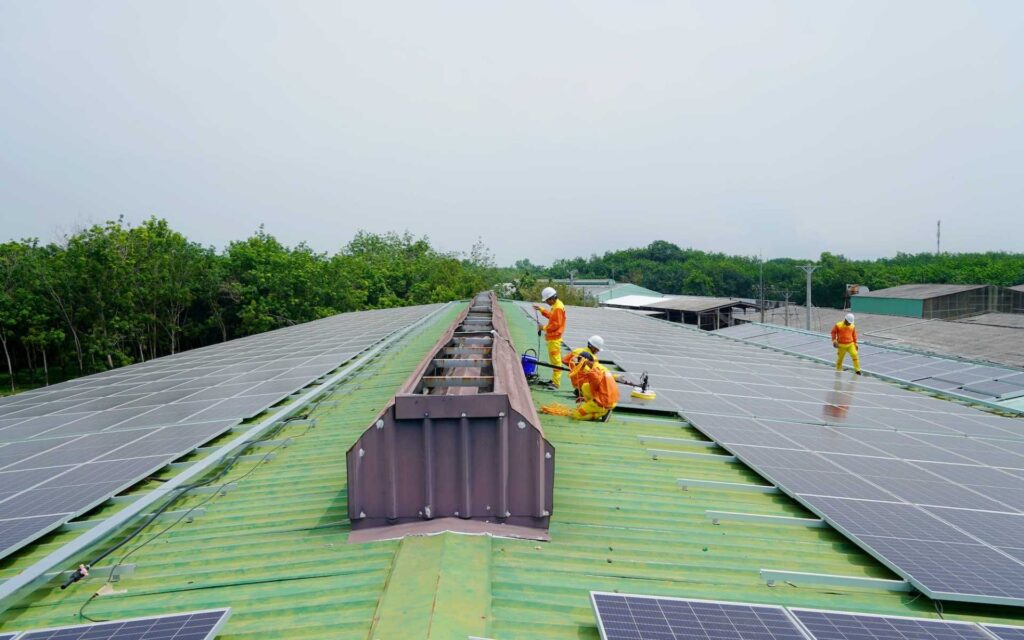
Step 1: Mount Installation
Before the panels can be placed, it’s essential to install mounts that will hold them. These are generally made of aluminum and must be secured firmly to the roof or ground, depending on your installation site. Make sure the mounts are angled correctly to optimize sunlight absorption.
Step 2: Install the Solar Panels
Once the mounts are in place, the solar panels can be attached. Carefully align each panel on the mounting rails and secure them with clamps or screws. Double-check the alignment to ensure that all panels are level and evenly spaced.
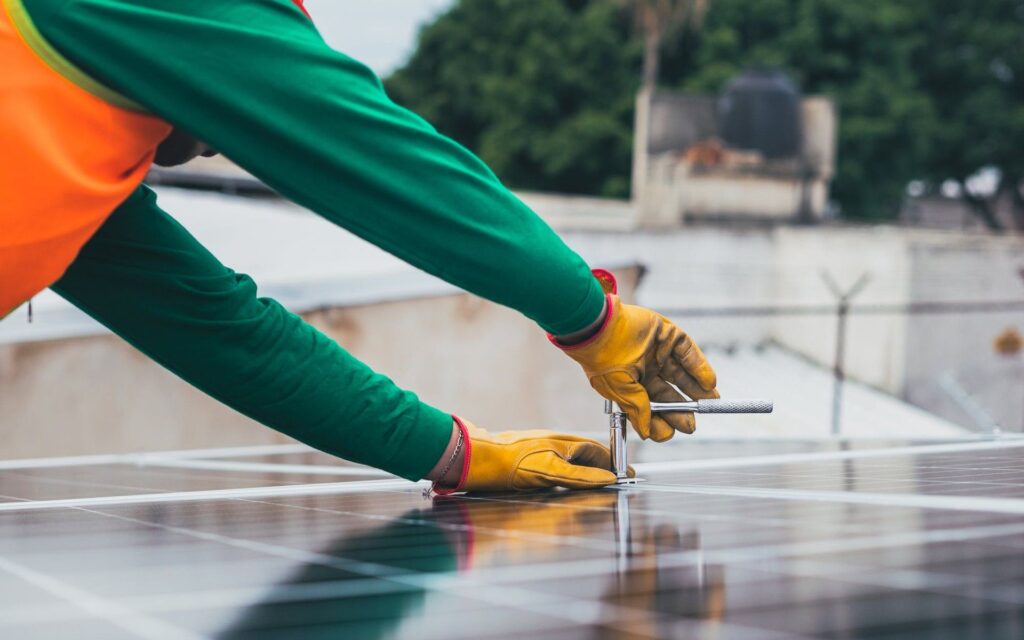
Step 3: Do Electrical Wiring
After the solar panels are in place, electrical wiring is the next step. Typically, the panels are connected in series or parallel circuits depending on the desired voltage and current. Properly insulate all connections to ensure safety and optimal performance.
Step 4: Connect the System to Solar Inverter
The solar inverter plays a pivotal role in converting the direct current (DC) generated by the solar panels into alternating current (AC) usable for your home or business. Connect the wires from the solar panels to the solar inverter, adhering to all safety guidelines.

Step 5: Connect Solar Inverter and Solar Battery
If your system includes a solar battery for energy storage, connect it to the solar inverter. This will allow you to store excess energy generated during the day for use during non-sunny hours or power outages.
Step 6: Connect Solar Inverter to the Grid
After connecting the battery, the next step is to connect the solar inverter to the electrical grid. This usually involves connecting the inverter to a circuit breaker in your electrical service panel. Make sure to follow local regulations and safety protocols during this phase.
Step 7: Start Solar Inverter
Once all the connections are in place, the final step is to start the solar inverter. Turn it on and monitor the system to ensure that it’s functioning correctly. Check for any error messages or performance issues.
Conclusion
Understanding the installation process can provide valuable context and peace of mind as you transition to solar energy. While professional installation is generally recommended, having a grasp of the procedure can empower you to make more informed decisions and ensure a smoother implementation.
Step-by-Step Guide to Installing Solar Panels
Installing solar panels is a significant step towards adopting renewable energy and reducing your carbon footprint. While the installation process is generally best handled by professionals, understanding the steps involved can provide valuable insights. This article outlines a step-by-step guide for installing solar panels.

Step 1: Mount Installation
Before the panels can be placed, it’s essential to install mounts that will hold them. These are generally made of aluminum and must be secured firmly to the roof or ground, depending on your installation site. Make sure the mounts are angled correctly to optimize sunlight absorption.
Step 2: Install the Solar Panels
Once the mounts are in place, the solar panels can be attached. Carefully align each panel on the mounting rails and secure them with clamps or screws. Double-check the alignment to ensure that all panels are level and evenly spaced.
Step 3: Do Electrical Wiring
After the solar panels are in place, electrical wiring is the next step. Typically, the panels are connected in series or parallel circuits depending on the desired voltage and current. Properly insulate all connections to ensure safety and optimal performance.
Step 4: Connect the System to Solar Inverter
The solar inverter plays a pivotal role in converting the direct current (DC) generated by the solar panels into alternating current (AC) usable for your home or business. Connect the wires from the solar panels to the solar inverter, adhering to all safety guidelines.


Step 5: Connect Solar Inverter and Solar Battery
If your system includes a solar battery for energy storage, connect it to the solar inverter. This will allow you to store excess energy generated during the day for use during non-sunny hours or power outages.
Step 6: Connect Solar Inverter to the Grid
After connecting the battery, the next step is to connect the solar inverter to the electrical grid. This usually involves connecting the inverter to a circuit breaker in your electrical service panel. Make sure to follow local regulations and safety protocols during this phase.
Step 7: Start Solar Inverter
Once all the connections are in place, the final step is to start the solar inverter. Turn it on and monitor the system to ensure that it’s functioning correctly. Check for any error messages or performance issues.
Conclusion
Understanding the installation process can provide valuable context and peace of mind as you transition to solar energy. While professional installation is generally recommended, having a grasp of the procedure can empower you to make more informed decisions and ensure a smoother implementation.
Criteria for Evaluating Solar Panel Suppliers
Choosing the right solar panel supplier is a critical decision for businesses in the solar energy sector. Various factors come into play, from product quality to logistical capabilities.
This article outlines the key criteria you should consider when evaluating potential suppliers.
Product Quality and Range
Technical Support and Training
Logistics and Delivery
Market Reputation and Customer Reviews
Certifications and Compliance
Conclusion
Navigating the complexities of choosing a solar panel supplier goes far beyond merely comparing prices and specifications.
As a leader in Solar Panel industry for over 14 years in China, SolarCtrl understands that factors like reliable technical support, efficient logistics, and industry compliance are pivotal for establishing a fruitful, long-term business relationship. We are committed to excelling in these areas, offering our clients not just products, but holistic solutions tailored for long-term success and reliability in the solar energy sector.
Criteria for Evaluating Solar Panel Suppliers
Choosing the right solar panel supplier is a critical decision for businesses in the solar energy sector. Various factors come into play, from product quality to logistical capabilities.
This article outlines the key criteria you should consider when evaluating potential suppliers.
Product Quality and Range
Technical Support and Training
Logistics and Delivery
Market Reputation and Customer Reviews
Certifications and Compliance
Conclusion
Navigating the complexities of choosing a solar panel supplier goes far beyond merely comparing prices and specifications.
As a leader in Solar Panel industry for over 14 years in China, SolarCtrl understands that factors like reliable technical support, efficient logistics, and industry compliance are pivotal for establishing a fruitful, long-term business relationship. We are committed to excelling in these areas, offering our clients not just products, but holistic solutions tailored for long-term success and reliability in the solar energy sector.
Commonly Asked Questions
Yes, we provide samples and charge for the samples with freight cost. The sample fees will be returned if the order quantity over 200pcs.
We have streamlined our production processes to ensure that most of our products are readily available in stock. This means that you can purchase samples and have them shipped at any time and without delay.
Technical support hotline or email for customers to contact in case of technical issues with our products.
Onsite technical support to assist with the installation and maintenance of the products.
Online resources such as manuals, troubleshooting guides, and FAQs to help customers resolve common issues with the products.
Warranty or guarantee period to ensure that customers are covered in case of product defects or malfunctions.
Repair and replacement services for damaged or faulty products.
To provide local technical support, we offer a range of services to VIP distributors, including installation, usage guidance, maintenance, and other related support, free of charge. For larger projects with a capacity of over 55KW, if on-site technical support is required, the cost of airfare, lodging, and meals must be covered by the distributor.
Our technical support services include system design, installation, commissioning, repair, and maintenance. We aim to provide prompt and effective technical support to ensure the smooth operation of your equipment and systems.
To optimize our technical support services, we continuously update our knowledge and skills, and we invest in the latest tools and technologies to enhance our capabilities. In addition, we strive to maintain open communication channels with our clients to ensure that their needs and concerns are addressed promptly and effectively.
Machine appearance customization: Customers can choose the style and color of the machine according to their preferences.
Logo customization: Customers can have their own logo printed on the machine to increase brand recognition.
Label customization: Customers can customize the labels on the machine to include specific information or warnings.
LCD display customization: Customers can customize the information displayed on the LCD screen to meet their specific needs.
Packaging customization: Customers can customize the packaging of the machine to suit their requirements, including the design and materials used.
For orders of less than 10 units, we generally ship within two days. For orders between 10 and 100 units, we aim to ship within one week. To ensure the quality of our products, we keep sufficient inventory and perform a final round of testing before packaging and shipping.
Please note that the delivery time may vary depending on factors such as the destination, shipping method, and customs clearance processes. We work with reliable shipping partners to ensure timely delivery and provide tracking information for all shipments.
We usually ship by DHL, UPS, FedEx, or TNT. Bulk orders can be shipped by airline or sea shipping as well. It is important to note that the choice of shipping method may depend on factors such as the size and weight of the shipment, the destination, and the urgency of the delivery.
We offer several payment methods for your convenience, including T/T, L/C, Western Union, PayPal, and cash. Please choose the payment method that works best for you.
Commonly Asked Questions
Yes, we provide samples and charge for the samples with freight cost. The sample fees will be returned if the order quantity over 200pcs.
We have streamlined our production processes to ensure that most of our products are readily available in stock. This means that you can purchase samples and have them shipped at any time and without delay.
Technical support hotline or email for customers to contact in case of technical issues with our products.
Onsite technical support to assist with the installation and maintenance of the products.
Online resources such as manuals, troubleshooting guides, and FAQs to help customers resolve common issues with the products.
Warranty or guarantee period to ensure that customers are covered in case of product defects or malfunctions.
Repair and replacement services for damaged or faulty products.
To provide local technical support, we offer a range of services to VIP distributors, including installation, usage guidance, maintenance, and other related support, free of charge. For larger projects with a capacity of over 55KW, if on-site technical support is required, the cost of airfare, lodging, and meals must be covered by the distributor.
Our technical support services include system design, installation, commissioning, repair, and maintenance. We aim to provide prompt and effective technical support to ensure the smooth operation of your equipment and systems.
To optimize our technical support services, we continuously update our knowledge and skills, and we invest in the latest tools and technologies to enhance our capabilities. In addition, we strive to maintain open communication channels with our clients to ensure that their needs and concerns are addressed promptly and effectively.
Machine appearance customization: Customers can choose the style and color of the machine according to their preferences.
Logo customization: Customers can have their own logo printed on the machine to increase brand recognition.
Label customization: Customers can customize the labels on the machine to include specific information or warnings.
LCD display customization: Customers can customize the information displayed on the LCD screen to meet their specific needs.
Packaging customization: Customers can customize the packaging of the machine to suit their requirements, including the design and materials used.
For orders of less than 10 units, we generally ship within two days. For orders between 10 and 100 units, we aim to ship within one week. To ensure the quality of our products, we keep sufficient inventory and perform a final round of testing before packaging and shipping.
Please note that the delivery time may vary depending on factors such as the destination, shipping method, and customs clearance processes. We work with reliable shipping partners to ensure timely delivery and provide tracking information for all shipments.
We usually ship by DHL, UPS, FedEx, or TNT. Bulk orders can be shipped by airline or sea shipping as well. It is important to note that the choice of shipping method may depend on factors such as the size and weight of the shipment, the destination, and the urgency of the delivery.
We offer several payment methods for your convenience, including T/T, L/C, Western Union, PayPal, and cash. Please choose the payment method that works best for you.
Your Trusted Source For
Let's raise your business to the next level, NOW! →
Start with following 4 steps:
1
Tell Us What You Need
Tell us as specific as possible of your needs, let us fully understand what you want.
2
Get Solution & Quote
We will work on the best solution according to your requirements, the specific quote will be provided within 24 hours.
3
Approve for Sample Order
Upon receiving your sample order and deposit, we will arrange for sample testing and shipment.
4
Approve for Mass Production
We will start mass production and handle the shipment after getting your approval and deposit.

Get A Free Quote!
- We will contact you within 24 hours
*All your information will be kept strictly confidential and our business staff will ensure that your private information is absolutely safe!
Your Trusted Source For
Let's raise your business to the next level, NOW! →
Start with following 4 steps:
1
Tell Us What You Need
Tell us as specific as possible of your needs, let us fully understand what you want.
2
Get Solution & Quote
We will work on the best solution according to your requirements, the specific quote will be provided within 24 hours.
3
Approve for Sample Order
Upon receiving your sample order and deposit, we will arrange for sample testing and shipment.
4
Approve for Mass Production
We will start mass production and handle the shipment after getting your approval and deposit.
Get A Free Quote!
- We will contact you within 24 hours
*All your information will be kept strictly confidential and our business staff will ensure that your private information is absolutely safe!
More Related Solar Products

High Frequency Inverter
SolarCtrl High Frequency Inverter offers a wide PV input voltage range, making it adaptable to various solar setups. Designed to thrive even in challenging environments with an anti-dusk kit.

Low Frequency Inverter
With a versatile pure sine wave output ranging from 1kW to 12kW, SolarCtrl Low Frequency Inverter can adapt to various power needs, and handle 3 times peak power effortlessly with its robust load capacity, which is perfect for inductive loads like motors, pumps, and air conditioners.

Solar Pump Inverter
SolarCtrl Solar Pump Inverter is efficient which get 5%-10% higher than orther inverter which need programming. 30% more water output with advanced inverter control algorithm and Maximum PowerPoint tracking efficiency reach 99% with advanced MPPT algorithm.
More Related Solar Products

High Frequency Inverter
SolarCtrl High Frequency Inverter offers a wide PV input voltage range, making it adaptable to various solar setups. Designed to thrive even in challenging environments with an anti-dusk kit.

Low Frequency Inverter
With a versatile pure sine wave output ranging from 1kW to 12kW, SolarCtrl Low Frequency Inverter can adapt to various power needs, and handle 3 times peak power effortlessly with its robust load capacity, which is perfect for inductive loads like motors, pumps, and air conditioners.

Solar Pump Inverter
SolarCtrl Solar Pump Inverter is efficient which get 5%-10% higher than orther inverter which need programming. 30% more water output with advanced inverter control algorithm and Maximum PowerPoint tracking efficiency reach 99% with advanced MPPT algorithm.
More Related Solar Energy Professional Articles
How Does an Inverter Work Without Any Backup Battery?
Inverters play a crucial role in solar power systems, converting direct current (DC) generated by solar panels into alternating current (AC) used by most household and industrial appliances. Many solar power systems incorporate backup batteries to store excess energy for use during non-sunny periods or power outages, but how do these inverters function without any backup batteries?
Can an Inverter with a Battery Be Used as a UPS?
Have you ever wondered if an inverter with a battery can function just like a UPS to keep your devices running during a power outage? While both devices provide crucial backup power, their designs and capabilities are not the same, raising questions about their interchangeability.
What is the Manufacturing Process of Solar Panels?
Are you curious about how sunlight is transformed into electricity? How do seemingly ordinary panels capture solar energy and convert it to power everything from homes to businesses? Understanding this process is crucial for advancing sustainable energy solutions.
Can I Mix Different Solar Panel Sizes When Wiring an Inverter?
Have you ever wondered if your solar array can include panels of various sizes? This is a common question for those expanding or upgrading their solar power systems. Understanding how to effectively integrate different solar panel sizes is key to maintaining efficiency and system health.
More Related Solar Energy Professional Articles

How Does an Inverter Work Without Any Backup Battery?
Inverters play a crucial role in solar power systems, converting direct current (DC) generated by solar panels into alternating current (AC) used by most household and industrial appliances. Many solar power systems incorporate backup batteries to store excess energy for use during non-sunny periods or power outages, but how do these inverters function without any backup batteries?
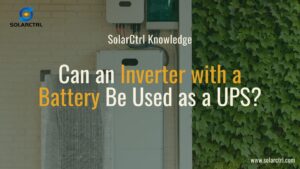
Can an Inverter with a Battery Be Used as a UPS?
Have you ever wondered if an inverter with a battery can function just like a UPS to keep your devices running during a power outage? While both devices provide crucial backup power, their designs and capabilities are not the same, raising questions about their interchangeability.

What is the Manufacturing Process of Solar Panels?
Are you curious about how sunlight is transformed into electricity? How do seemingly ordinary panels capture solar energy and convert it to power everything from homes to businesses? Understanding this process is crucial for advancing sustainable energy solutions.

Can I Mix Different Solar Panel Sizes When Wiring an Inverter?
Have you ever wondered if your solar array can include panels of various sizes? This is a common question for those expanding or upgrading their solar power systems. Understanding how to effectively integrate different solar panel sizes is key to maintaining efficiency and system health.
Solar Energy Specialist
We are experts in solar energy industry. If you think you have a problem with it call us for a free, no-obligation, quote.

